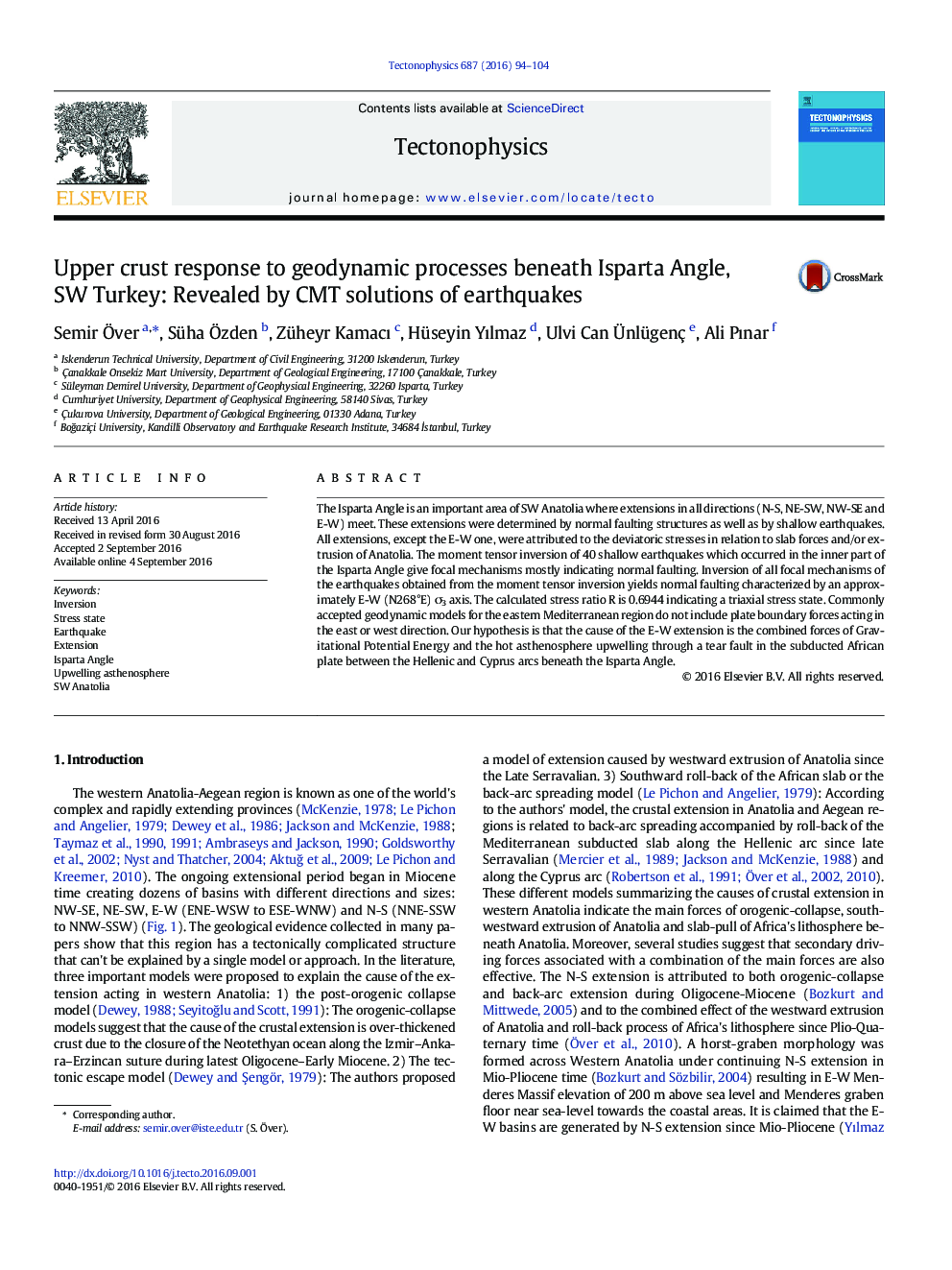| Article ID | Journal | Published Year | Pages | File Type |
|---|---|---|---|---|
| 4691209 | Tectonophysics | 2016 | 11 Pages |
•Present day stress tensor is obtained seismic fault plane solution data•We obtained E-W extensional stress regime in the Isparta Angle•The high R value indicates near uniaxial stress state implying that this extension is close radial extension•We suggest a model to explain E-W extensions in the geodynamical context•The cause of the E-W extension is the combined forces of the GPE and upwelling hot asthenospheric material.
The Isparta Angle is an important area of SW Anatolia where extensions in all directions (N-S, NE-SW, NW-SE and E-W) meet. These extensions were determined by normal faulting structures as well as by shallow earthquakes. All extensions, except the E-W one, were attributed to the deviatoric stresses in relation to slab forces and/or extrusion of Anatolia. The moment tensor inversion of 40 shallow earthquakes which occurred in the inner part of the Isparta Angle give focal mechanisms mostly indicating normal faulting. Inversion of all focal mechanisms of the earthquakes obtained from the moment tensor inversion yields normal faulting characterized by an approximately E-W (N268°E) σ3 axis. The calculated stress ratio R is 0.6944 indicating a triaxial stress state. Commonly accepted geodynamic models for the eastern Mediterranean region do not include plate boundary forces acting in the east or west direction. Our hypothesis is that the cause of the E-W extension is the combined forces of Gravitational Potential Energy and the hot asthenosphere upwelling through a tear fault in the subducted African plate between the Hellenic and Cyprus arcs beneath the Isparta Angle.
Graphical abstractFigure optionsDownload full-size imageDownload as PowerPoint slide
